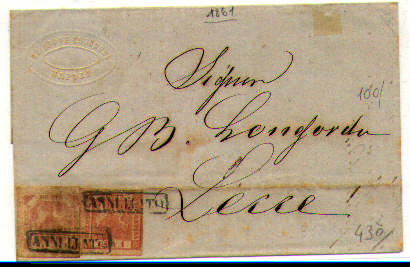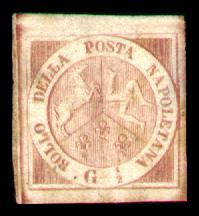
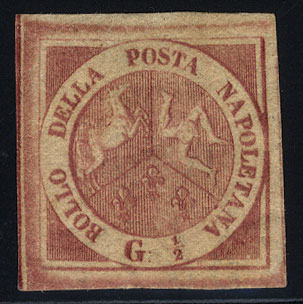
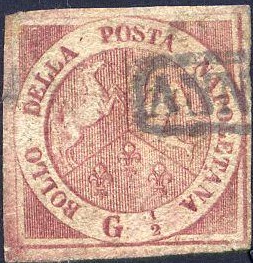
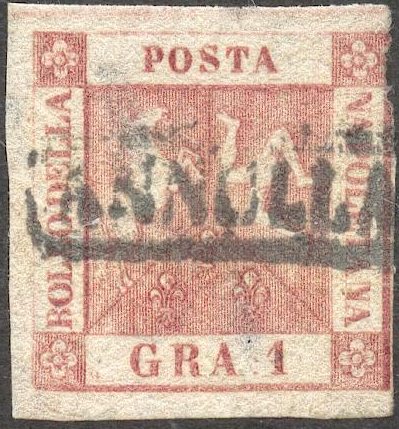
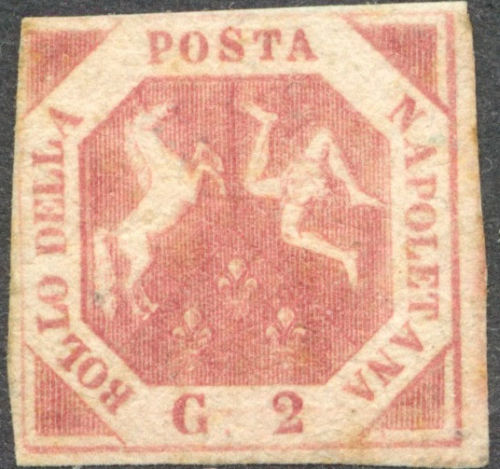
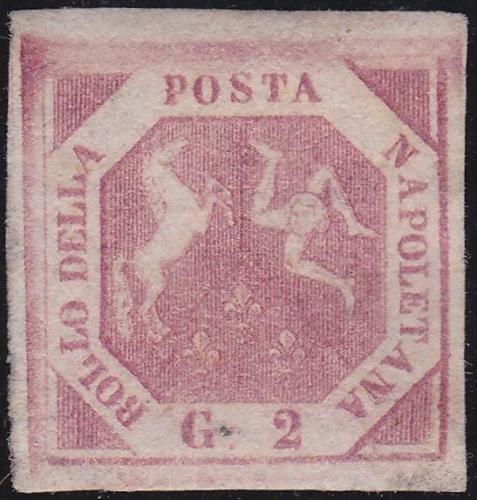
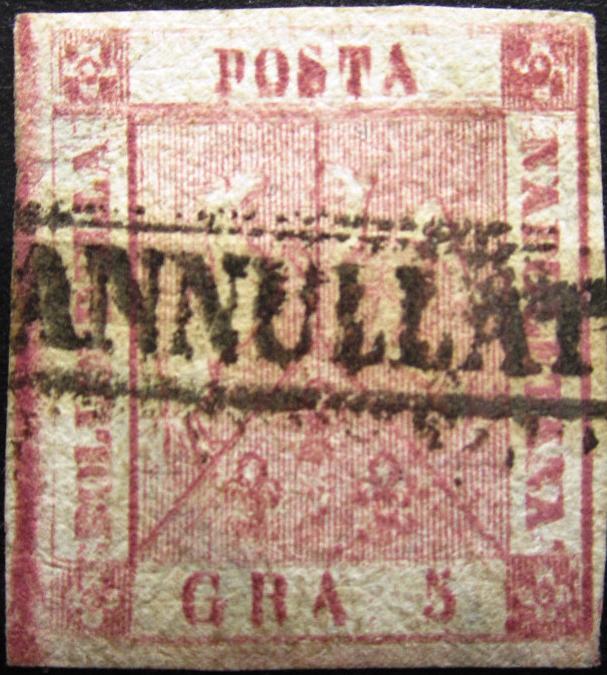
Napoli
Return To Catalogue - Naples 1860 issue - Italy - Neapolitan Provinces
Note: on my website many of the
pictures can not be seen! They are of course present in the cd's;
contact me if you want to purchase them: evert@klaseboer.com.
With thanks to Lorenzo,
(check his excellent website on Italian States!) who kindly
set some of his images at my disposal.
1/2 Grano redbrown 1 Grano redbrown 2 Grano redbrown 5 Grano redbrown 10 Grano redbrown 20 Grano redbrown 50 Grano redbrown
These stamps have a watermark 40 'Fleur de lis' in the whole sheet with a border with 'BOLLI POSTALI' written in it. The first prints were in a lighter shade and replaced by darker printed stamps.
Value of the stamps |
|||
vc = very common c = common * = not so common ** = uncommon |
*** = very uncommon R = rare RR = very rare RRR = extremely rare |
||
| Value | Unused | Used | Remarks |
| 1/2 g | RR | RR | |
| 1 g | RR | *** | |
| 2 g | R | ** | |
| 5 g | RR | R | |
| 10 g | RR | RR | |
| 20 g | RR | RR | |
| 50 g | RRR | RRR | |
Typical cancel:
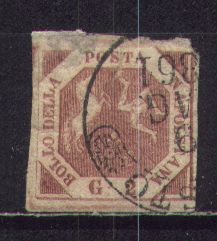
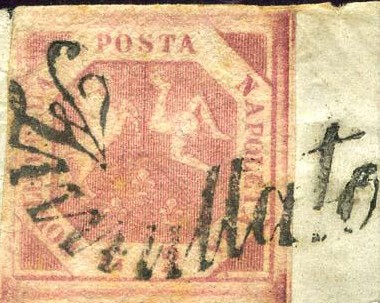
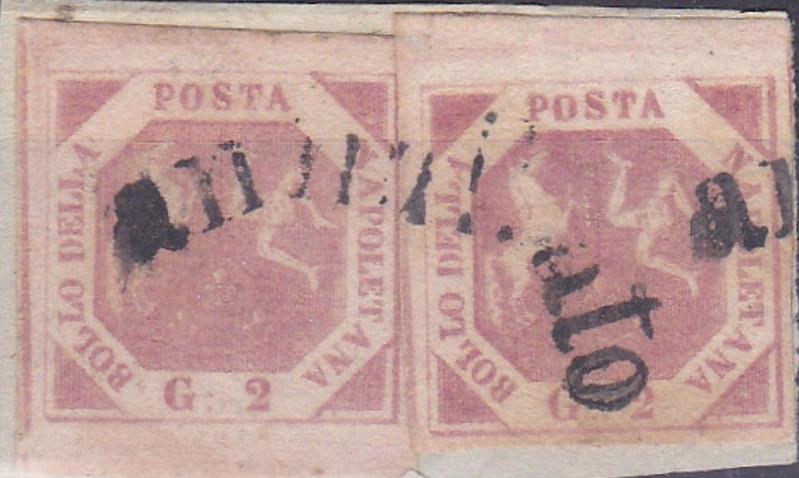
A wavy "Annullato" and a curved "annullato"
cancel
Private reprints exist of all values except 2 g (the printing plate could not be found). They were made in 1896 and printed on thicker unwatermarked paper. The colours are slightly different from the original issue.

Reprints of 1896
I've been told that the next stamp is such a reprint as well (with forged cancel):
How to detect forgeries: the easiest way is to check the
watermark: there are 40 Fleur-de-lys in a sheet of 100 stamps (so
most stamps show a portion of the watermark only). The genuine
stamps have secret letters in the design, however, these secret
signs are often extremely hard to see. The secret marks were
applied by Giuseppe Masini, who left his name in small letters on
the different stamps:
1/2 g "G"
1 g "M"
2 g "A"
5 g "S"
10 g "I"
20 g "N"
50 g "I"
Thus forming "G MASINI". Example of the 1 g (in the
corner at the end of the arrow, there is an inverted 'M'):
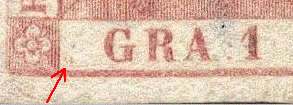


'G' in the 1/2 g value and 'I' in the 10 g value
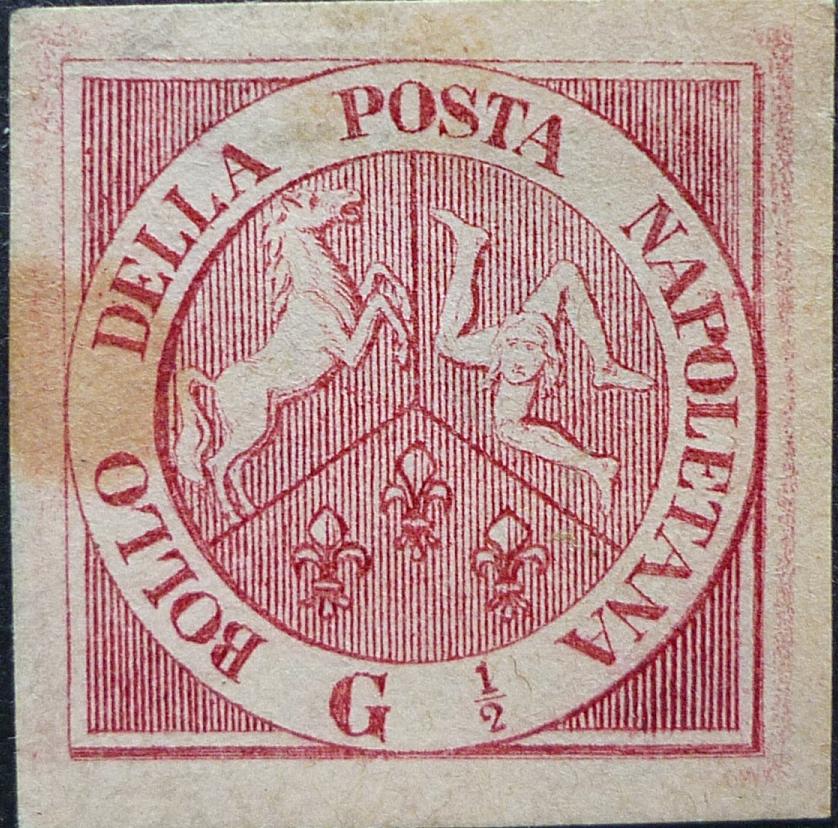
A very clearly printed 1/2 G, but with no secret sign...
Examples of forgeries:
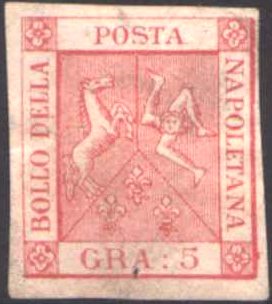
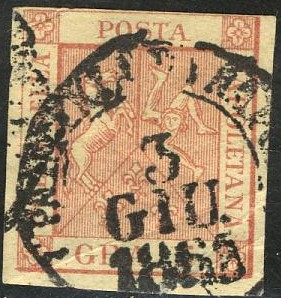
According to http://forgeriesofitalianstates.com/Naples/Naples.htm,
the above forgeries were made by the forger Erasmus (Erasmo)
Oneglia. It is shown there with a concentric rings cancel. There
is a dot besides the 'E' of 'DELLA'. The '5' is quite different
from a genuine stamp.
The following stamps are forgeries as well:
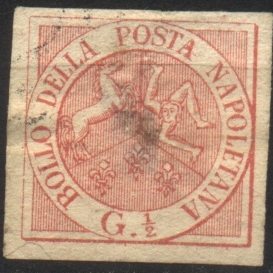
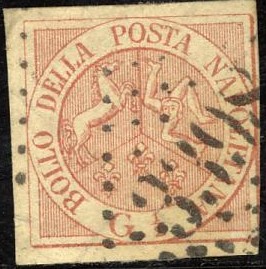
I've also seen the 1/2 g value with a cancel consisting of
concentric rings or 'annul..' in a straight line. In this
forgery, the 'G' is too broad.
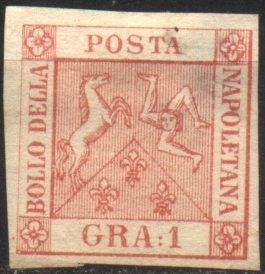
I've seen this forgery of the 1 G value with a cancel consisting
of 4 concentric rings.
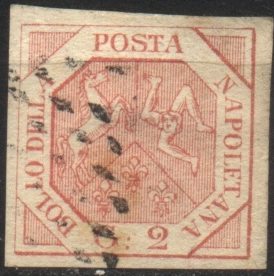
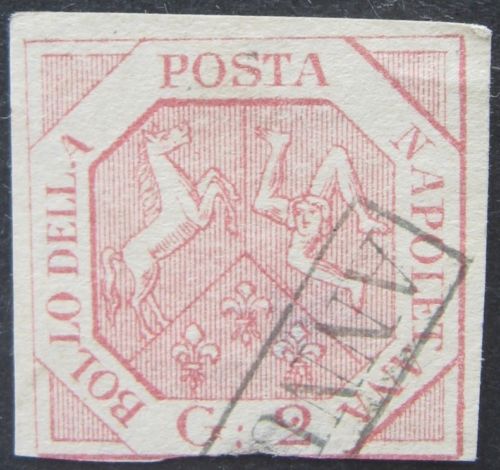
This forgery of the 2 G has the 'G' too broad and the '2'
different.
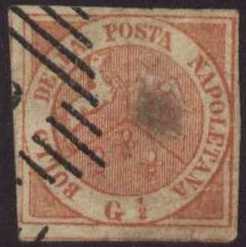

Forgeries, all made by the same forger; see next minisheet.
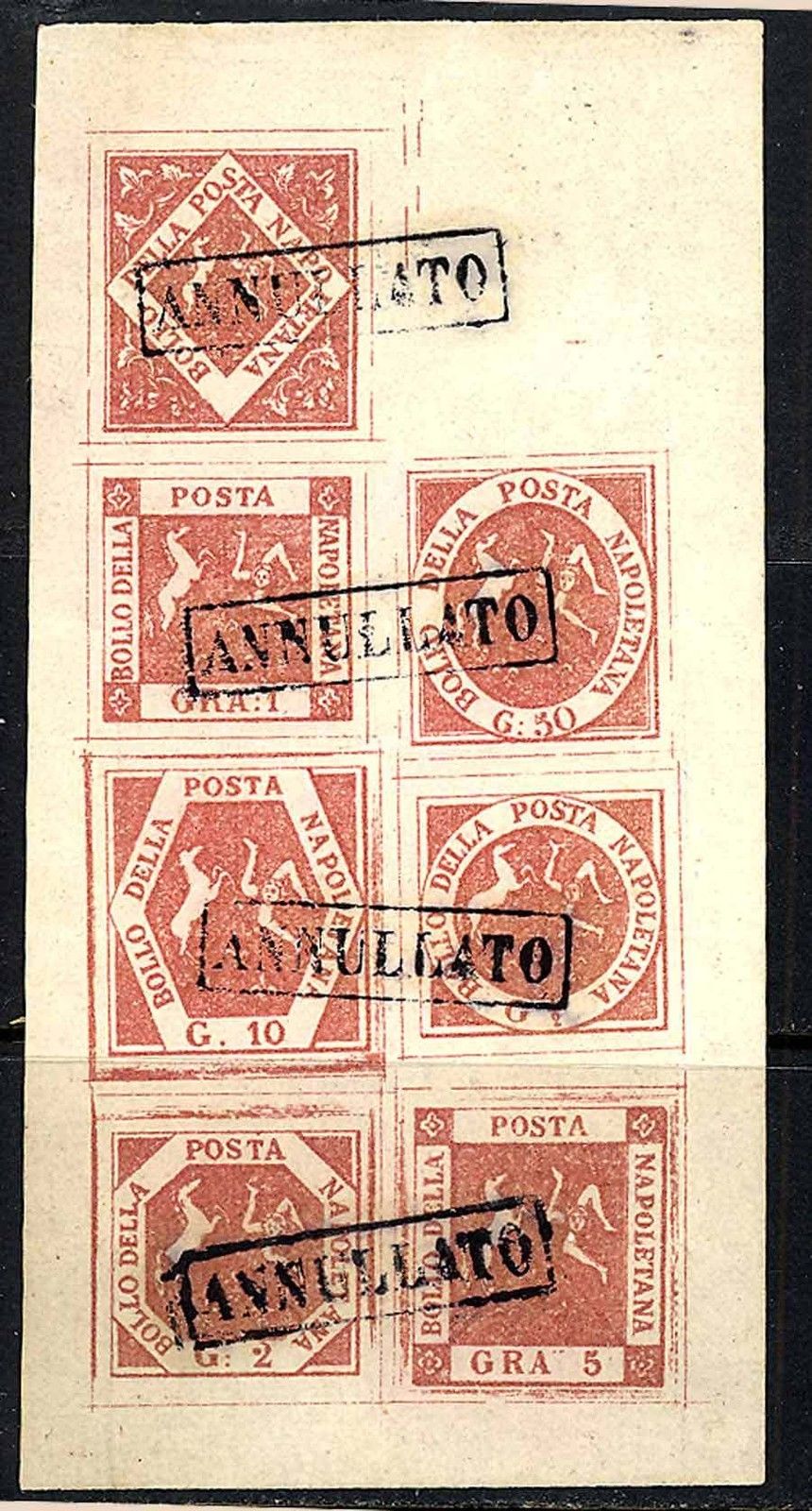
The above minisheet with all values proves that these forgeries
were indeed made by the same forger.
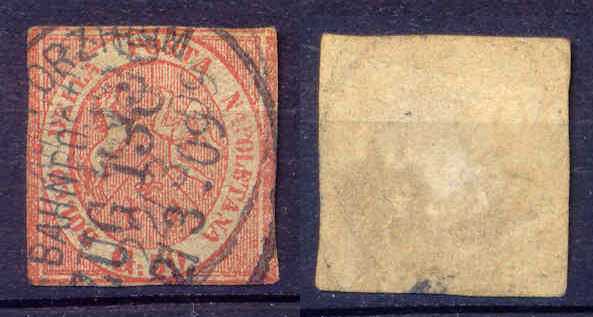
(Probably a forgery, note the German 'BAHNPOST' or railway cancel
from ...? to Pforzheim of 1909?)
A forgery in the wrong colour (probably an imitation of the 1860 issue? when a blue stamp with inscription 'T 1/2' instead of 'G 1/2' was issued):
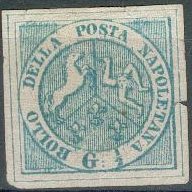
In the following two stamps, there is a hatched border all around the stamps (I think they must be forgeries, possibly Oneglia):
Postal forgeries also exist: 2 types of the 2 gr, 5 types of the 10 gr and 7 types of the 20 gr. For more details on these forgeries see the book 'Distinghuishing Characteristics of Classic Stamps, Europe - 19th Century, (except old German States)' by Hermann Schloss or 'Postal Forgeries of the World' by H.G. Leslie Fletcher (with pictures in black and white) or on Lorenzo's website: http://www.antichistati.com/800/appr/ap_30en.htm (with pictures of all postal forgeries).
Examples of postal forgeries:
2 g, example of a postal forgery:
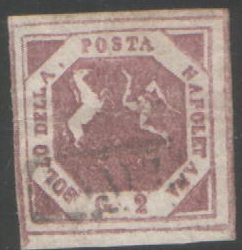
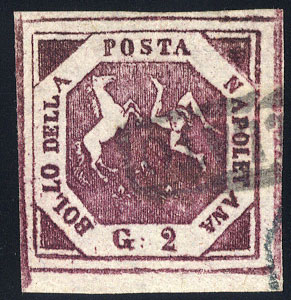
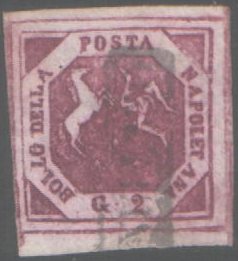
Second postal forgery, right retouched one
Both postal forgeries of the 2 g are
lithographed, instead of engraved, they have no secret mark. The
above 2 g forgeries are the second postal forgery; the base of
the second 'L' of 'BOLLO' is slanting downwards (this has been
retouched later, see second and last images). The 'S' of 'POSTA'
has a large top loop and its lower part slants to the left. The
inscription frame is clearly larger at the left hand side than at
the right hand side of the stamp. The 'G' has a thick curled
tail. The '2' is situated lower than the 'G' (this was also later
retouched).
There is another postal forgery of the 2 g stamp, with the 'S' of
'POSTA' slanting to the right, the 'O' large. The 'D' in 'DELLA'
is small, and the 'LL' is larger. Also in this forgery, the
inscription frame is larger at the left hand side than at the
right hand side.
10 gr, example of a postal forgery:
This postal forgery of 10 g is lithographed, instead of engraved. The 'PO' of 'POSTA' is placed too low and the 'S' is too short at the top. There are also differences in the other letters of the other words. It is the second postal forgery of the 10 g, described in the book 'Postal Forgeries of the World'.
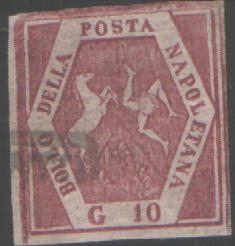
Postal forgery nr 5
This postal forgery of 10 g has no ':' behind the 'G', it is lithographed, instead of engraved. The 'P' of 'POSTA' has a small top loop and the 'S' is quite strange compared to the genuine stamp. It is the fifth postal forgery of the 10 g, described in the book 'Postal Forgeries of the World'.
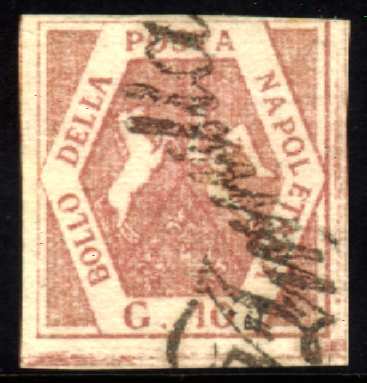
(I've been told that this could be another postal forgery)
20 g, example of a postal forgery:
The above postal forgery of the 20 g is lithographed, instead of engraved. The secret mark 'N' is missing. The 'P' of 'POSTA' is more elongated at the top and the 'O' is tall and thin. There are also differences in the other letters.
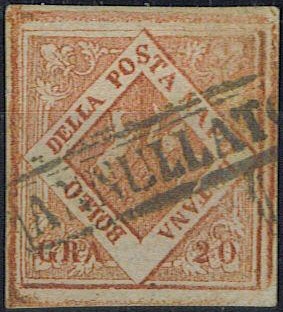
Another postal forgery of the 20 g value
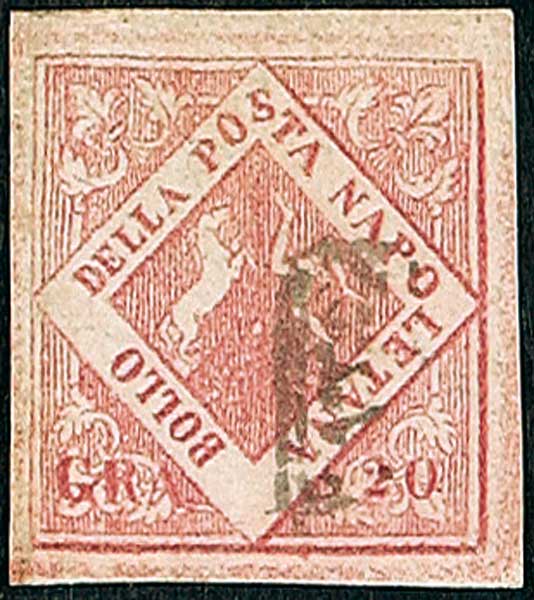
Other postal forgery with the 'P' and 'O' of 'POSTA' too far
apart.
Typical cancel 'ANNULLATO' (here on letter):
